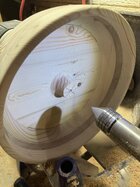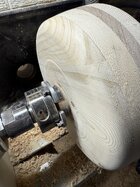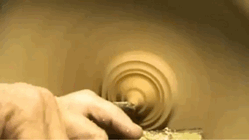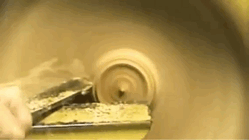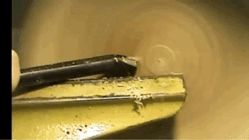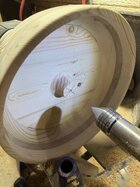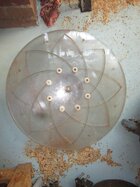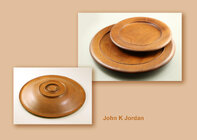I do have a jam chuck- came with my Longworth chuck- but I’ve never used it. I’ll try. Thanks.
Might be best to make a jam chuck by turning a piece of scrap wood or plywood for an exact fit. Can hold the wood with screws on a faceplate, or put it between centers and turn a tenon, reverse and hold with the chuck, then flatten the face and turn a bit to shape to fit nicely, snug, but not enough to damage the bowl. (The jam chuck can be another bowl blank that can be reused.
When mounting the piece in the jam chuck, it’s common to hold the tenon you want to remove with a live center in the tailstock. This will keep the work centered and more secure. Clean up the foot at the same time. Turn the tenon down until only a small central piece remains for support, then remove the bowl and cut off the support with a small saw or bench chisel, and sand smooth or better, use a hand scraper to smooth inside the foot.
If supporting by the tailstock and the workpiece is not too large or the rim might be fragile, instead of turning something to jam inside the bowl, sometimes I’ll turn a groove in the face of plywood sized to fit the rim of the bowl. The pressure from the tailstock will keep the piece secure. As always, don’t turn the speed up too fast!
If you end up doing a lot of these, there are other options. Search the forum, the internet, youtube, etc. I like books: two I like are “A Guide to Work-Holding on the Lathe” by Fred Holder, and Doc Green’s book “Fixtures and Chucks for Woodturning”, both available from Amazon - full of ideas!
If you are a member of a woodturning club, you can probably get ideas and even mentoring from experienced club members. Turning clubs are full of helpful people!
JKJ
